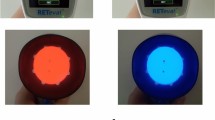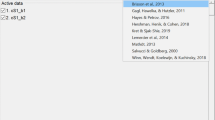Abstract
A provisional, semiautomated version of a system for automated testing of the afferent pupillary reflex with perimetric methods under controlled conditions is described. The target projected onto the perimeter cupola is used as the stimulus for triggering the pupillary response. In a modification to the Octopus 201, the pupil is illuminated by two IR LED diodes, while the pupillary responses are recorded by the onboard IR sensitive TV camera built into the perimetric unit. Measurements of the pupillary area as a function of time and stimulus luminance have been performed and have resulted in consistent results. Here, one perimetric program, working with stimuli above the threshold for the afferent pupillary light reflex is described. The present setup works with system-specific software and standard hardware, the central data processing unit being a desk-top computer (IBM PC AT-03).
The mating of an automated pupillary measuring unit to an automated perimeter may open the door for a more widespread evaluation of the value and the clinical application range of pupillary perimetry and may be of interest in other areas of visual and clinical psychophysics. The shortcomings of the present system, in particular insufficient temporal resolution and lack of full automation, are being removed at the present time.
Similar content being viewed by others
References
Harms H. Objektive Perimetrie. Ber dtsch ophthalmol Ges 1940; 53: 63–70.
Harms H. Grundlagen, Methodik und Bedeutung der Pupillenperimetrie für die Physiologie und Pathologie des Sehorgans. Graefes Arch Ophthalmol 1949; 149: 1–68.
Harms H. Entwiklungsmöglichkeiten der Perimetrie. Graefe's Arch Ophthalmol 1950; 150: 28–57.
Harms H. Hemianopische Pupillenstarre. Klin Mbl Augenheilk 1951; 118: 133–47.
Harms H. Die Bedeutung einer einheitlichen Prüfung aller Sehfunktionen. Ber dtsch Ophthalmol Ges 1960; 63: 181–5.
Harms H, Aulhorn E, Ksinsik R. Die Ergebnisse pupillomotorischer Perimetrie bei Stirnhirnverletzten und die Vorstellung über den Verlauf der Lichtreflexbahn. In: Die normale und die gestörte Pupillenbewegung. E Dodt and KE Schrader eds. München: JF Bergmann. 1973; 72–82.
Campbell FW, Robson JG, Westheimer G. Fluctuations of accommodation under steady viewing conditions. J Physiol London 1959; 145: 579.
Alexandridis E, Krastel H. Ein tragbares Infrarot - Reflex Pupillometer. Ber Dtsch Ophthalmol Ges 1971; 71: 652–4.
Dodt E, Alexandridis E. Electroretinography and pupillography as supplementary tools in the evaluation of retinal function in man. 6th ISCERG Symposium. Leipzig: G Thieme. 1968; 459–66.
Alexandridis E. Pupillographie: Anwendungsmöglichkeiten als objektive Untersuchung- smethode der Netzhautsinnesfunktion. Heidelberg: Alfred Hüttig. 1971
Harms H. Möglichkeiten und Grenzen der pupillometrischen Perimetrie. Klin Mbl Augenheilk 1956; 129: 518–34.
Fankhauser F, Häberlin H. Dynamic range and stray light. Doc Ophthalmol 1980; 50: 143–67.
Alexandridis E. Lichtsinn und Pupillenreaktion In: Die normale und die gestörte Pupillen- bewegung. E Dodt and KE Schrader (eds) JF Bergmann München 1973; pp 58–71.
Schweitzer NMJ. Threshold measurements on the light reflex of the pupil in the dark adapted eye. Doc Ophthalmol 1956; 10: 1–78.
Schweitzer NMJ, Bouman MA. Differential threshold measurements on the light reflex of the human pupil. Arch Ophthalmol 1958; 59: 514–50.
Barbieri A. El campo visual luminoso y el reflejo pupilar. Arch Oftalmol B Air 1929; 4: 618–57.
Campos E. Threshold pupillary reflexes and their application to pupilloperimetry. I. The pupillary light reflex. Boll Oculist Ital 1974; 53: 289–309.
Reuther R, Alexandridis E, Krastel H. Pupillenreflexstörungen bei Infarkten der Arteria cerebri posterior. Arch Psychiatr Nervenkr 1981; 229: 249–257.
Reuther R, Krastel H, Alexandridis E. Pupillenreflexstörungen bei Infarkten der Arteria cerebri posterior. Arch Psychiatr Nervenkr 1981; 229: 259–66.
Cibis GW, Campos EC, Aulhorn E. Pupillary hemiakinesia in suprageniculate lesions. Arch Ophthalmol 1975; 93: 1322–27.
Ganka R, Shoin I. Pupillary reflex: Perimetry for children and unconscious patients. Jap J Clin Ophthalmol 1970; 24: 517–23.
Thompson HS, Montague P, Cox TA, Corbett J. The relationship between visual acuity pupillary defect and visual field loss. Am J Ophthalmol 1982; 93: 681–88.
Aoyama T. Pupillographic perimetry. Acta Soc Ophthalmol Jap 1975; 79: 1247–56.
Bresky RH, Charles S. Pupil motor perimetry. Am J Ophthalmol 1969; 68: 108–112.
Körner F, Teuber HL. Visual field defects after missile injuries to the geniculo-striate pathway in man. Exp Brain Res 1973; 18: 88–113.
Johnson LN, Hill RA, Bartholomew MJ. Correlation of afferent pupillary defect with visual field loss on automated perimetry. Ophthalmology 1988; 95: 1649–55.
Brown RH, Zilis JD, Lynch MG, Sanborn GE. The afferent pupillary defect in asymetric glaucoma. Arch Ophthalmol 1987; 105: 1540–3.
Kohn AN, Moss AP, Podos SM. Relative afferent pupillary defects in glaucoma without characteristic field loss. Arch Ophthalmol 1979; 97: 294–6.
Prywes AS. Unilateral afferent pupillary defects in asymmetric glaucoma. 1976; 94: 1286–8.
Levantin P. Pulillary escape in diseases of the retina or optic nerve. Arch Ophthalmol 1959; 62: 768–79.
Levantin P, Prasloski PF, Collen MF. The swinging flashlighyt test in multiphasic screening for eye disease. Can J Ophthalmol 1973; 8: 356–60.
Miller S, Thompson HS. Pupil cycle time in optic neuritis. Am J Ophthalmol 1978; 85: 635–42.
Thompson HS, Corbett JJ, Cox TA. How to measure the relative afferent pupillary defect. Surv Ophthalmol 1981; 26: 39–42.
Reulen JP, Marcus JT, Koops D, De Vries FR, Tiesinga G, Boshuizen K, Bos JE. Precise recording of eye movements: the IRIS technique. Part 1. Med & Biol Eng & Comput 1988; 26: 20–6.
Reulen JPH, Marcus JT, Van Gilst MJ, Koops D, Bos JE, Tiesinga G, De Vries FR, Boshuizen K. Stimulation and recording of dynamic pupillary reflex: the IRIS technique. Part 2. Med & Biol Eng & Comp 1988; 26: 27–32.
Barber JL, Thomson WD, Forsyth PM. A new system for the simultaneous measurement of pupil size and two - dimensional eye movement. Clin Vision Sci 1987; 2: 131–42.
Cüppers C, Graff TH. Ueber ein neues Gerät zur stetigen Beobachtung und Aufzeichnung des normalen und pathologischen Pupillenreflexes. Klin Mbl Augenheilk 1951; 119: 189–92.
Schultes N, Doepfer Baldauf H, Mertz M. Verarbeitung von Bildsequenzen bei der ortsauflösenden Pupillographie. In: Angewandte Szenenanalyse. DAGM Symposium, Karlsruhe, JP Foith (ed) Springer Berlin Heidelberg New York. 1979; pp 289–92.
Mertz M, Roggenkämpfer P. Ein bildanalytisches Verfahren zur Messung der Pupil- lengrösse In: Die normale und gestörte Pupillenbewegung. E Dodt and KE Schrader, eds, München: JF Bergmann. 1973; 97–103.
Löwenstein O, Löwenfeld ID. Electronic Pupillography. Arch Ophthalmol 1958; 59: 352–63.
Castenholz A. Eine neue Methode zur Beobachtung und Registrierung der Pupillen- bewegungen (Pupillo - Kymographie) im Infrarotlicht. Graefe's Arch Ophtahlmol 1968; 175: 100–10.
Ishikawa S, Naito M, Inaba K. A new videopupillography. Ophthalmologica 1970; 160: 248–59.
Smith SA, Smith SE. Reduced pupillary light reflexes in diabetic autonomous neuropathy. Diabetologica 1983; 24: 330–2.
Kador PF, Kinoshita JH, Terubayashi H, Akagi Y. Diabetic changes of pupillary reaction and iridial pathology. Acta Soc Ophthalmol Jap 1988; 92: 484–8.
Bischoff A. Die diabetische Polyneuropathie. Thieme, 1963; Stuttgart.
Bonkilo A. Relation between neuritis and the clinical background in diabetes mellitus. Arch Intern Med 1950; 85: 944–54.
Friedmann SA, Friedberg R, Podolak E, Bedell RH. Pupillary abnormalities in diabetic neuropathy. Ann Intrn Med 1967; 67: 977–83.
Fujii T, Ishikawa Uga S. Ultrastructure of the iris muscle in diabetes mellitus. Ophthal- mologica 1977; 160: 248–59.
Gliem H. Pupillomotorische Veränderungen bei Diabetikern. Acta Ophthalmol 1971; 49: 936–55.
Hreidarsson AB. Pupil motility in long term diabetes. Diabetologica 17: 145–50.
Martin MM. Diabetic neuropathy. A clinical study of 150 cases. Brain 1953; 76: 594–624.
Ohrt V. Diabetic iridopathy. Universitetsvorlaget J Aarhus Denmark.
Rundles RW. Diabetic neuropathy; general review with report of 125 cases. Medicine (Baltimore) 1945; 24: 111–60.
Alexandridis E. 1985. The Pupil Springer Verlag Berlin.
Kase M, Nagata R, Yoshida A, Hanada I. Pupillary light reflex in amblyopia. Invest Ophthalmol Vis Sci 1984; 25: 467–71.
Bos JE. Clinical quantitative pupilometry. Neuroophthalmology 1988; 8: 299–305.
Bouma H. Receptive systems mediating certain light reactors of the puil of the human eye. Philips Rep 20 Suppl 1965; No. 5.
Borgmann H. Elektronische Pupillographie in der klinischen Diagnostik. In: die normale und die gestörte Pupillenbewegung. E Dodt and KE Schrader, eds, München: JF Bergmann. 1973; 83–8.
Spring KH, Stiles WS. Variation of pupil size with change in the angle at which the light stimulus strikes the retina. Brit J Ophthalmol 1948; 32: 340–6.
Author information
Authors and Affiliations
Rights and permissions
About this article
Cite this article
Fankhauser, F., Flammer, J. Puptrak 1.0 — a new semiautomated system for pupillometry with the Octopus perimeter: A preliminary report. Doc Ophthalmol 73, 235–248 (1989). https://doi.org/10.1007/BF00155093
Accepted:
Issue Date:
DOI: https://doi.org/10.1007/BF00155093




